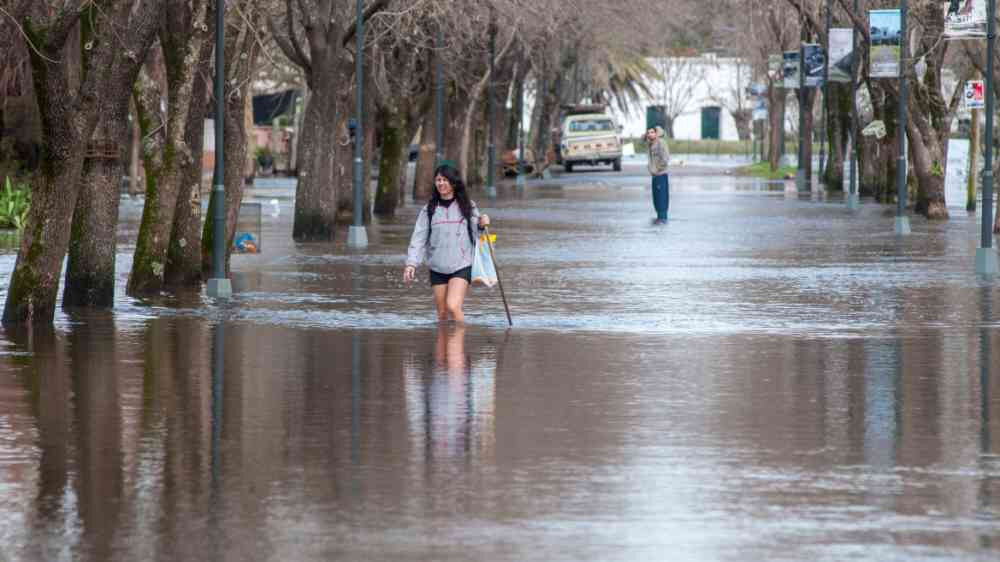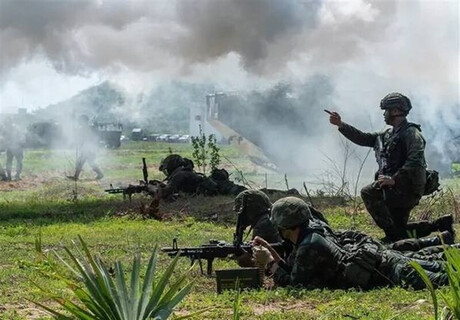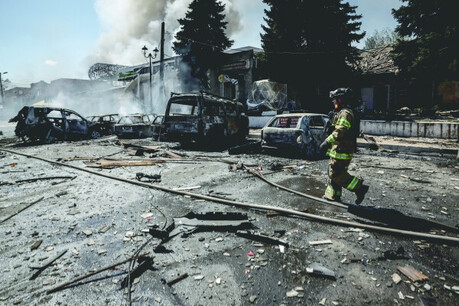
Bahía Blanca, Argentina – Argentina is facing a stark reminder of the escalating risks posed by climate change as a series of extreme weather events have battered the nation in recent weeks. An unprecedented deluge in Bahía Blanca on March 7th, which saw over 300 mm of rain fall in a mere eight hours, followed a prolonged and intense heatwave across northern Argentina, including the capital Buenos Aires. These consecutive disasters have not only caused significant human suffering and economic damage but also underscore the urgent need for enhanced climate resilience and adaptation strategies.
The torrential rainfall in Bahía Blanca, nearly half of the city's average annual precipitation, is the most severe event on record since 1956. Triggered by a cold front colliding with persistent hot and humid conditions, the downpour overwhelmed the city's infrastructure, leading to widespread flooding. This was exacerbated by already saturated soils from over 80 mm of rain the previous week. The catastrophe has resulted in at least 16 deaths, the displacement of 1,400 people, and an estimated $400 million USD in damages to the city (Ámbito, 2025). Tragically, two individuals remain missing (La Nación, 2025).
The flooding followed weeks of oppressive heat that gripped a vast area spanning northern Argentina, southern Brazil, Paraguay, and Uruguay. From mid-February to early March, temperatures soared above 40°C, with 61 cities in central-north Argentina experiencing official heatwave conditions. In Buenos Aires, the extreme temperatures led to widespread blackouts and traffic disruptions as energy demand peaked (Global Times, 2025, AP News, 2025). While official figures on heat-related fatalities are still pending, historical data suggests a significant increase in mortality during such extreme heat events (Chesini et al., 2019; Chesini et al., 2021, Pinotti et al., 2024).
In response to these devastating events, an international team of researchers from Argentina, Kenya, the Netherlands, Sweden, Denmark, Mexico, the United States, and the UK conducted a rapid attribution study to determine the role of human-induced climate change in both the extreme heat and the subsequent heavy rainfall. Their preliminary findings paint a concerning picture.
The study concluded that the extreme heat experienced in the summer of 2024/25 in northern Argentina, including Buenos Aires, was a rare event in the current climate, with an estimated return period of 50 to 100 years. However, the researchers found that such intense heat would have been "virtually impossible" in a climate 1.3°C cooler than today. Climate models corroborate this, indicating a strong trend towards more frequent and intense heatwaves with future warming. Worryingly, the models may even be underestimating the true impact of climate change on these temperature extremes. Projections suggest that in a world 2.6°C warmer than pre-industrial levels, such heat events could become commonplace.
The influence of climate change on the Bahía Blanca rainfall event is less definitive but still points towards a concerning trend. While data from 35 local weather stations showed a 7-30% increase in the intensity of heavy rainfall associated with 1.3°C of global warming, this trend was not consistently reflected in broader gridded reanalysis products. Nevertheless, climate models generally align with the station data, indicating an increase in both the likelihood and intensity of heavy rainfall events similar to the one experienced in early March. This increasing trend in extreme rainfall with rising temperatures is consistent with scientific understanding of how warmer air can hold more moisture. Despite the inconsistencies between datasets, the evidence suggests that climate change likely played a role in making the Bahía Blanca downpour more intense.
The compounding impacts of these consecutive events highlight the vulnerabilities within Argentina, particularly in urban centers like Buenos Aires. Rapid urbanization, aging infrastructure, and significant social inequalities exacerbate the risks associated with these increasingly frequent and intense hazards. The fact that nearly half of the urban population is engaged in the informal economy further underscores their vulnerability to climate shocks, which can disrupt livelihoods and expose individuals to dangerous conditions.
Experts emphasize the critical need for proactive measures to build resilience. Investing in robust early warning systems that can effectively communicate impending hazards is paramount. Climate-smart urban planning is also essential, incorporating strategies to mitigate the impacts of both heat and flooding. This includes the creation of more green spaces, such as parks and urban forests, which can help to lower urban heat island effects and absorb excess rainwater, reducing flood risks. Blue infrastructure, like permeable pavements and constructed wetlands, can also play a vital role in managing stormwater.
Furthermore, preparedness efforts must take into account the increasing likelihood of compound and sequential extreme events, such as prolonged heat followed by intense rainfall. Strengthening infrastructure, improving drainage systems, and ensuring equitable access to resources and support are crucial steps in safeguarding communities.
The recent climate-related disasters in Argentina serve as a stark warning for nations worldwide. As the planet continues to warm, managing increasingly frequent and intense extreme weather events will become a defining challenge. The need for urgent action on climate mitigation, coupled with significant investments in adaptation and resilience-building, has never been more apparent.
Potential Additional Information to Consider Adding:
Government Response: Details about the immediate and long-term response from local and national governments. This could include emergency relief efforts, financial aid, and infrastructure repair plans.
Community Impact: Stories and perspectives from the affected communities, highlighting their experiences and resilience.
Economic Consequences: A more detailed analysis of the broader economic impact beyond the initial damage estimates, including impacts on agriculture, tourism, and other sectors.
Long-Term Adaptation Strategies: Discussion of specific long-term plans being considered or implemented to adapt to the changing climate, such as upgrades to drainage systems, building codes, and water management strategies.
International Cooperation: Information on any international aid or collaboration efforts to support Argentina's recovery and resilience-building.
Public Health Implications: Further discussion of the public health risks associated with both extreme heat and flooding, including the spread of diseases and mental health impacts.
By incorporating some of these additional details, the news article can provide a more comprehensive and impactful account of the situation in Argentina and its broader implications for a warming world.
[Copyright (c) Global Economic Times. All Rights Reserved.]






























